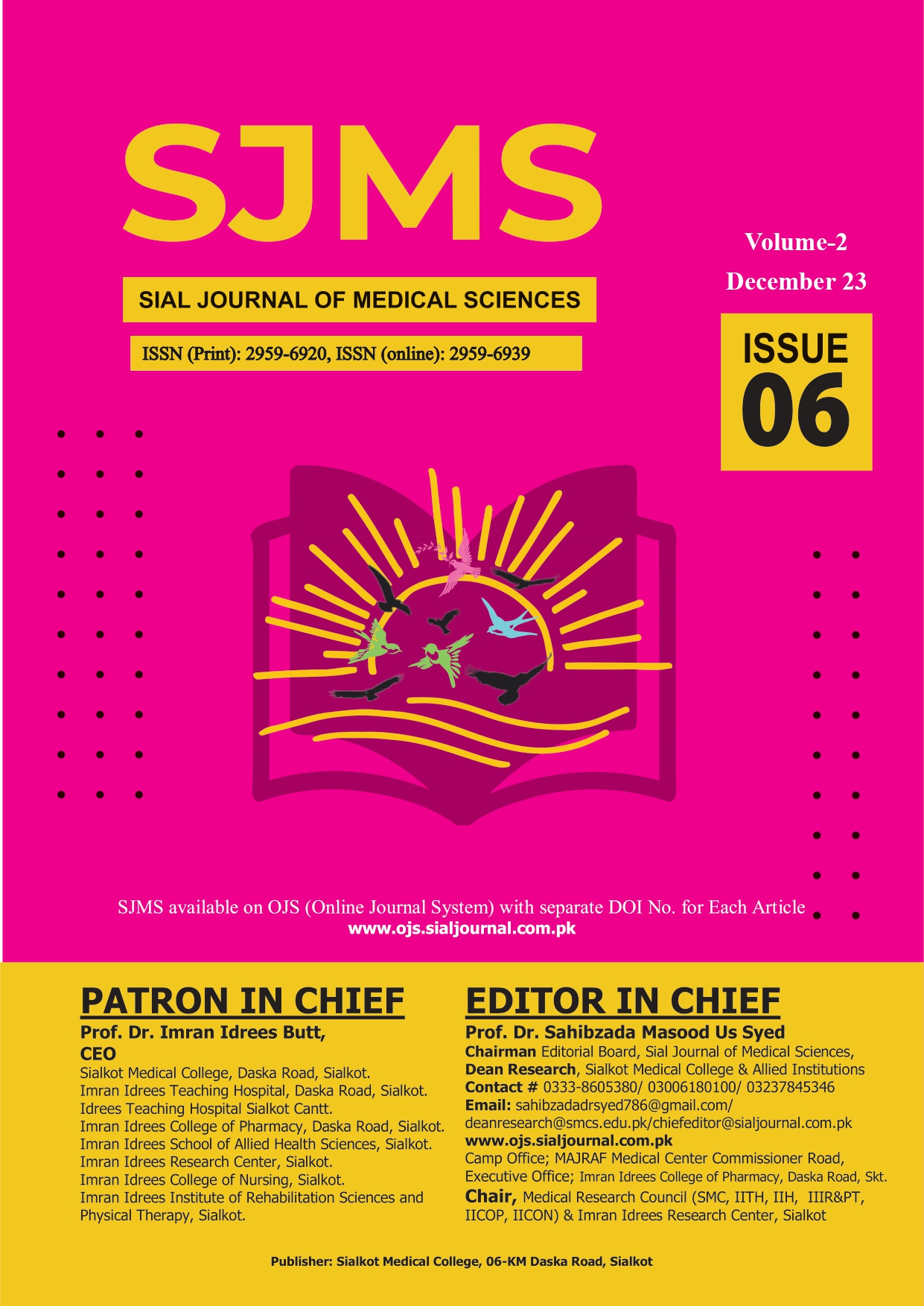TREATMENT STRATEGIES FOR MDR TB AT PULMONOLGOY WARD ALLAMA IQBAL MEMORIAL TEACHING HOSPITAL, SIALKOT
DOI:
https://doi.org/10.60127/sjms.v2i6.29Keywords:
drug susceptibility test, treatment regimen, MDR TB,Abstract
To search for MDR-TB strategy to determine the &
regimen design that was implemented for multi-drug resistant
tuberculosis (MDR-TB) patients at Allama Iqbal Memorial Teaching
Hospital and to evaluate the frequency of cure rate, treatment
failure and death rate.
Methodology: Retrospective descriptive and observational study
was conducted to collect the data of hundred consecutive patients,
diagnosed and treated with short term regimen (STR) and long term
regimen (LTR) regimens at AIMTH
Results: Pooled data reported that success rate was 4% in patients
who received STR, while there were 2% failure rates and 11%
death (fatality) during treatment who received LTR. There were 44
males and 56 females between 10 to 85 years of age. Among them
70% were with no previous medical ailment, 30% presented with
comorbidities like Diabetes 26%, Hepatic pathologies 2%, Cardiac
diseases 1% and Psychiatric problems 1%. Average age was 46
years and weight was 50 kg.
Conclusion: It was concluded that MDR TB is developing in the
patients without any age and gender discrimination, but inadequate
regimen, deficient time duration and lack of awareness were main
contributing factors. The patients who responded to MDR TB
treatment were depending upon their past medical and drug history,
drug along with drug susceptibility test.
Downloads
Published
Issue
Section
License
Authors retain the copyright to their work and grant the Sial Journal of Medical Sciences the right of first publication under a Creative Commons Attribution 4.0 International (CC BY 4.0) license. This license allows others to share, adapt, and reuse the work for any purpose, including commercial use, as long as appropriate credit is given to the original authors and the journal.
By submitting a manuscript, authors confirm that the work has not been published previously (except as an abstract, lecture, or academic thesis), is not under review elsewhere, and has been approved by all authors and relevant authorities. Once accepted, the article will be openly accessible under the CC BY 4.0 license, ensuring wide dissemination and reuse with proper attribution.







